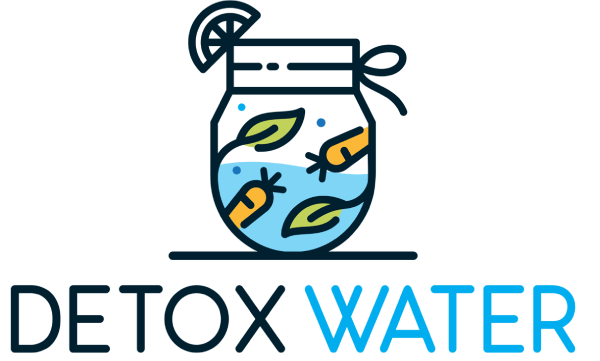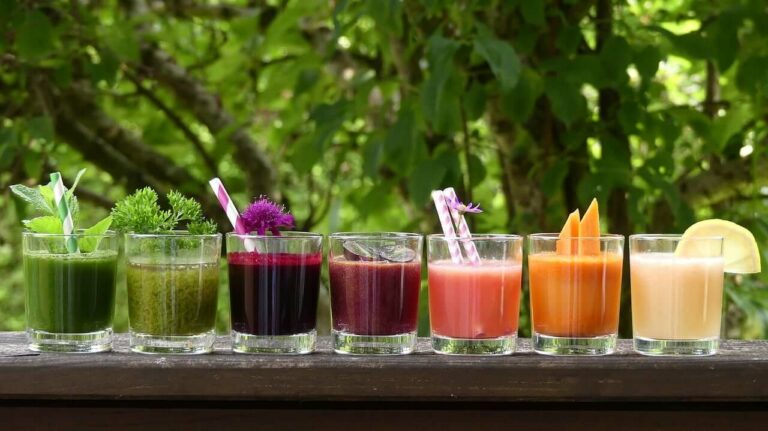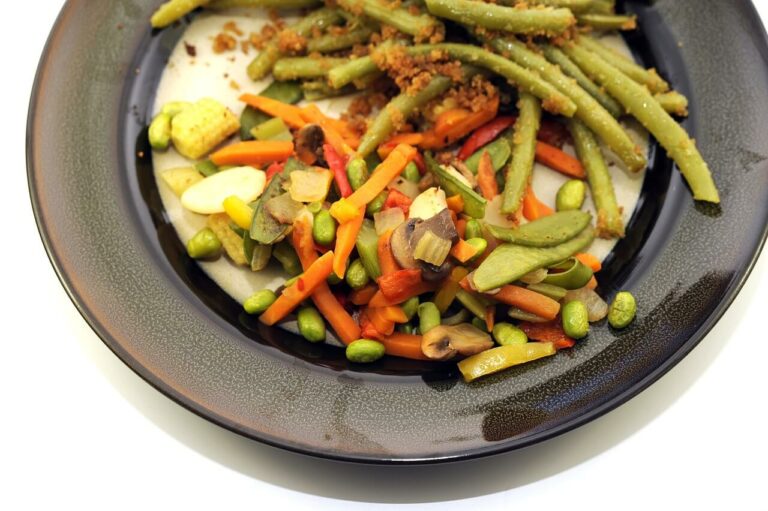Purify & Energize: The Ultimate 21-Day Detox Plan

Health is a journey, and one often taken step by step. Our well-worn paths can become obscured with harmful toxins, born from a routine laden with processed foods, unhealthy habits, and an increasingly polluted environment. While our bodies are equipped with a natural ability to combat these toxins, the load sometimes becomes overwhelming. It is then that a detox program, such as a 21-day detox diet, can help recalibrate the body to its optimal state.
Contents
Understanding Detoxification
Detoxification is a process of eliminating toxins and other unwanted substances from the body. This process primarily occurs in the liver, where harmful toxins are transformed into less toxic substances that can be excreted. However, other organs like the kidneys, lungs, and skin also play essential roles in detoxification.
One common misconception about detoxification is that it’s a quick fix for weight loss or a cure-all for various health problems. Scientifically, it’s a process that aids the body’s natural ability to filter and remove toxins. It’s important to clarify that detox diets are not magic bullets. Instead, they’re about giving your digestive system a break, eating real food, and adopting healthy habits that support your body’s detoxification process.
The Science Behind a Healthy Detox
The toxins we encounter daily—from processed foods, pollution, and even stress—can interfere with our bodies optimal functioning. They can contribute to chronic inflammation, alter our gut health, and lead to weight gain.
Numerous scientific studies highlight how certain foods and behaviors can support our body’s natural detox processes.
For instance, eating a diet rich in whole grains like brown rice, antioxidant-rich foods like green apples, and nutritious fats in foods like olive oil can enhance liver function, our main detoxifying organ. Hydrating adequately with lemon or cucumber water and green tea can help flush toxins from the body and support kidney function.
Detox diets typically revolve around two major phases: the elimination phase and the reintroduction phase. You abstain from consuming certain foods or food groups during the elimination diet. Then, during the reintroduction phase, you gradually bring back these foods while monitoring your body for potential reactions.
Foods to Enjoy on a Detox Plan
Your detox diet should consist primarily of fruits and vegetables. These powerhouses of nutrition are packed with vitamins, minerals, and antioxidants, which can help boost your immune system, reduce inflammation, and enhance your body’s natural detoxification processes. Opt for a colorful range, as each color represents different antioxidants.
Whole grains like brown rice, quinoa, and oats are rich in fiber, promoting healthy digestion by bulking up stool and speeding up the elimination of waste from your body. They also help to regulate blood sugar levels, preventing spikes and crashes that can lead to overeating.
Lean proteins such as fish, chicken, tofu, and eggs are essential for repairing body tissues and maintaining muscle mass, particularly if you increase your physical activity during the detox. They can also keep you feeling full, reducing the likelihood of snacking on less healthy options.
Healthy fats are key in a balanced detox diet. Unprocessed foods rich in monounsaturated and polyunsaturated fats, such as avocados, olives, and nuts, can help lower harmful cholesterol levels, reducing the risk of heart disease. They also provide essential fatty acids, which your body can’t produce.
Remember, hydration is crucial. Filtered water, herbal teas, and green tea should be your beverages of choice. Hydrating keeps your digestive health running smoothly and helps to flush toxins out of your body. Green tea, in particular, is known for its antioxidants that support detoxification.
Foods to Avoid on a Detox Plan
The key food group to eliminate during your detox is processed foods. These are often packed with unhealthy fats, sugars, and salt and are low in the essential nutrients your body needs to function optimally. Processed food can include everything from fast food and packaged snacks to certain types of bread and canned goods.
Refined carbohydrates like white bread, pasta, and pastries can cause rapid spikes in blood sugar, leading to energy crashes later. They also often contain less fiber than their whole-grain counterparts, so they won’t keep you feeling full as long.
Limit your intake of red meat during your detox, focusing instead on lean proteins. While red meat can provide valuable nutrients like iron and vitamin B12, it’s also higher in saturated fats and has been linked to an increased risk of specific health problems when consumed in excess.
While detoxing, it’s a good idea to steer clear of caffeine and alcohol. These substances can strain your liver, an organ that plays a crucial role in detoxification.
Lastly, beware of added sugars. These can hide in various foods, from the obvious culprits like desserts and sugary drinks to less suspected ones like sauces and low-fat products.
Preparing for the 21-Day Detox Plan
As we dive into our detox plan, remember this is more than a diet – it’s a holistic approach to revamping your health. Before you jump on this bandwagon, it’s crucial to understand the medical considerations involved.
Start by consulting with a healthcare provider. The health journey may not always be smooth sailing, especially if you have existing conditions like diabetes, high blood pressure, or even a history of eating disorders. Your doctor will assess your health and determine whether a detox diet is safe and suitable.
Once you’ve got the green light, it’s time to gear up mentally. A 21-day detox can feel daunting, but it’s vital to understand the reasons behind this plan – to eliminate toxins, improve gut health, and pave the way for a healthier lifestyle. Start by setting achievable health goals and visualizing the benefits: more energy, improved gut health, weight loss, and glowing skin.
Next, take a critical look at your pantry. Remove processed food that has crept into your diet. The goal is to replace these with whole foods loaded with abundant nutrients to support your body’s natural detoxification capacity. When grocery shopping, focus on fresh fruits, vegetables, lean proteins, and healthy fats like avocado. Whole wheat grains like brown rice are an excellent supplement for energy and better absorption of nutrients. Plan weekly meal plans beforehand, and consider prepping some meals in advance to set yourself up for success.
Week 1: Gentle Beginnings
Week one of the detox program is about easing into your new eating habits. The focus is on clean eating – eliminating processed food and incorporating more fruits, vegetables, and whole foods. Enjoy a green smoothie made with almond milk, protein powder, and green apples for breakfast. Savor colorful salads, lean proteins like chicken or fish, and whole wheat grains for lunch and dinner.
Don’t underestimate the importance of hydration in this detox diet. Drinking plenty of water – plain or jazzed up with slices of lemon or cucumber – helps remove toxins from your body. And for a warm beverage, consider green tea, which naturally helps speed up detoxification.
Gentle physical activities such as walking or yoga are also introduced in week one. These activities and mindfulness will aid in weight management and increase your energy levels.
Week 2: Stepping Up the Plan
In week two, we step things up. Introduce a wider variety of detox-friendly foods like cruciferous vegetables, known for their digestive enzymes, into your daily meals. Opt for heart-healthy fats like olive oil and almonds. Swap your regular tea or coffee for green tea, and don’t shy away from adding antioxidant-rich berries to your meals.
It’s time to boost your physical activity. If you’ve been walking, try adding in some light jogging intervals. If yoga has been your go-to, try a more strenuous flow.
Alongside the diet and exercise changes, there’s a third pillar to our detox plan – rest. Good sleep is vital for weight loss and overall health. Try to maintain regular sleep hours and create a bedtime routine that tells your body it’s time to rest. Similarly, managing stress through activities like meditation or reading can also aid in detoxification and improving gut health.
Week 3: Full Detox Mode
Congratulations on reaching week three – the full detox mode. Now’s the time to reap the benefits of clean eating habits and maximum nourishment. Continue to avoid processed food and incorporate even more variety into your meals. Maybe it’s time to try that kale salad recipe or introduce quinoa, another healthy grain, into your diet plan.
This week, consider stepping up the exercise intensity if you’re comfortable. Remember, the goal isn’t to wear yourself out but to support your body’s natural capacity to remove toxins and achieve your health goals.
A successful detox plan isn’t just about what you eat or how much you exercise. It’s also about mental health and mindfulness. Continue practicing mindfulness, focusing on your meals, and savoring each bite. Use meditation or journaling to manage stress and support your detox process.
Remember, this 21-day detox plan is just the start. It’s about making sustainable changes to your lifestyle that can improve your health in the long run. So, by the end of these three weeks, you’ll have more than a day-to-day detox – you’ll have a lifestyle plan that you can maintain for lasting health benefits.
Daily Routines and Habits to Support Detoxification
Ensuring the lasting benefits of the 21-day detox plan doesn’t end with the conclusion of the third week. Our bodies are impressive machines, always working behind the scenes to keep us healthy. Yet, we need to fuel this machine correctly for optimum efficiency. Beyond 21 days, maintaining a health-oriented lifestyle is vital to sustaining the positive impacts of detoxification.
The pillar of long-term detoxification is establishing routines that prioritize scientifically-supported habits. For instance, garnering adequate sleep is not a luxury but a necessity. According to the National Sleep Foundation, adults need between 7 to 9 hours of sleep per night for optimal health. During sleep, the body undergoes natural detoxification, cleansing the brain of toxins that accumulate during the day.
Similarly, regular physical activity keeps the circulatory system active, aiding in removing toxins through sweat and breath. It doesn’t always mean hitting the gym hard; something as simple as a brisk walk, yoga, or dancing to your favorite tunes at home can make a big difference.
A balanced diet forms the third cornerstone of sustainable detoxification. Emphasizing whole foods, lean proteins, fresh fruits and vegetables, and minimizing processed food can help your body effectively manage toxins.
Practical routines include a refreshing morning ritual with a glass of warm water and lemon, followed by a brisk walk or yoga. The afternoon can focus on mindful eating and a quick power nap. Evenings could incorporate light physical activity, a wholesome dinner, and a calming routine before bedtime for quality sleep.
Addressing Potential Challenges
Embarking on a detox journey may be accompanied by a few hurdles. It’s normal to face challenges like initial cravings for processed food or experiencing what’s popularly called “detox symptoms.” These symptoms may include fatigue, headaches, skin breakouts, or changes in bowel movements. They usually occur due to the body adjusting to the sudden changes in diet and lifestyle and generally subside over time.
However, if these symptoms become severe, it is crucial to seek professional medical advice. Self-diagnosis or persevering without understanding the root cause can be harmful. Remember, the goal of a detox plan is to enhance your well-being, not to risk it.
Beyond the 21-Day Detox Plan
As you step into the 22nd day and beyond, the focus is on maintaining the benefits of your efforts over the past three weeks. The 21-day plan is a springboard to a healthier, more balanced lifestyle.
The principles learned during the detox period – mindful eating, regular physical activity, and adequate rest – should be woven into the fabric of your daily life. These are not quick-fix solutions but elements of a sustainable, long-term lifestyle.
Remember, just as you would take your car for regular servicing, your body, too, needs regular check-ups. Healthcare providers can give personalized advice based on changes in your health status and lifestyle modifications.
Conclusion
In retrospect, the 21-day detox plan is an initiation into a lifestyle that empowers your body’s natural detoxifying system. Science supports the benefits of sleep, physical activity, and a balanced diet in maintaining our health. This journey has illuminated these cornerstones and offered a structured approach to integrating them into your life.
While the 21-day detox plan can set a strong foundation, maintaining a healthier lifestyle is ultimately in your hands. It requires commitment and consistency. However, the rewards of such a journey, in terms of improved well-being and vitality, are undoubtedly worth it.
So here’s a call to action – continue researching, exploring, and prioritizing your health. Each step you take, no matter how small, brings you closer to becoming the healthiest version of yourself. Because, after all, the journey toward health is a marathon, not a sprint.

Zeynep is a Dietitian and holds B.S. in Nutrition and Dietetics. She has a wide range of experience with patients, particularly in alternative medicine, oncology nutrition, hospital dietitian, neurological disease, and bariatric field.


